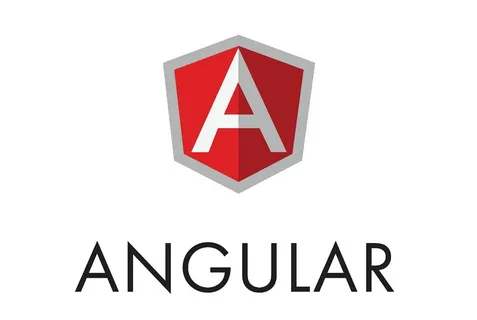Angular vs React: Choose the Right Framework for Web Development

Are you unsure about the two common options while searching for the ideal framework for your custom web development?
There are a great deal of similar and remarkable highlights in every one of them, and both are appropriate for making a task with effectiveness in quite a few unique conditions. In any case, you want to consider different factors like spending plan, time, adequacy, expectation to learn and adapt, etc. prior to choosing. The two options, Angular and React, continue to perplex developers, whether they are seasoned professionals or novices. Web developers find it challenging to compare these JavaScript frameworks because each of these custom website development services has strengths and weaknesses of its own. However, we have you covered.
To assist you in choosing the best framework for your website development process, we’ll compare Angular and React in this blog article in a number of different ways.
As a beginning, let’s understand Angular and React.
Angular

Angular is an open-source JavaScript front-end structure created and managed by Google’s Angular team. Angular is popular among the client side for their ability to create web and mobile apps that are scalable and efficient with HTML, CSS, and TypeScript. In order to understand the difference between the two, it’s necessary to know what benefits they offer and how it can help us in our concerned work.
Benefits of Angular
- Angular enables a user to develop a clean code along with a dependency injection.
- They deliver a single routing option and have an interactive UI data binding.
- In order to execute a unit test in Angular, you would want to infuse mock information into the controller, then, at that point, review the outcome and its way of behaving. Additionally, it permits you to make each and every page independently and afterward combine them with the parts to see the eventual outcome.
- Angular helps you create strong template solutions by using angular libraries. It also lets you develop reusable components with the help of directives.
- Extends HTML syntax.
React

React is a front-end JavaScript library that permits you to develop UIs from reusable UI components. A performance-based and adaptable solution is provided by React by means of server-side rendering. It permits developers to make consistent UX and complex UI.
Benefits of React
- React uses reusable codes and offers a seamless debugging process.
- Faster updates on both the server-side and front-end support.
- React is view-oriented and supports both android and iOS platforms
- React uses a simple and easy design that allows developers to transport an app in react efficiently.
- What’s the difference between angular and react
Ease of Learning and Adoption

Using JavaScript frameworks in small steps? Then React will make learning easier. React, which is renowned for its simplicity, is a great option for developers who are unfamiliar with JavaScript frameworks. Because of its component-based architecture, developers can create reusable user interface (UI) components, which reduces duplication and encourages clean code.
On the other hand, because of its extensive ecosystem and TypeScript language integration, Angular has a higher learning curve. Although newbies may suffer a lengthier learning curve, developers with prior experience in object-oriented programming may find this website development software more intuitive.
Performance

Excellent performance is made possible by React’s virtual DOM (Document Object Model), which guarantees effective updates and rendering. It works well for single-page applications (SPAs) and effectively manages intricate user interfaces. Virtual DOM trees are based on the server and are very lightweight. React hopes to surpass Angular as far as runtime execution. Additionally, because React’s data binding process is unidirectional, there are no watchers assigned to bindings, which reduces workload.
Well, this doesn’t apply to Angular. Since it utilizes a bidirectional data binding process, each binding requires a watcher to screen changes, and each goes on until all watchers have been affirmed. Thus, the bidirectional data binding process might hurt Angular’s performance. Nonetheless, this might change with the incorporation and upgrade of new innovation Ivy to Angular. The sophisticated tools and two-way data binding of Angular can affect performance in very big apps. But over time, Angular has made substantial advancements in this area, and its Ivy renderer aids in performance optimization.
Community and Ecosystem

Facebook is the maker of React, and Google’s designers developed Angular. Support from these two gigantic companies is another explanation; each has acquired prevalence more rapidly than different frameworks. The developer community has done and continues to do an excellent job of updating both React and Angular since their origin.
Both have very successful and enormous communities with many active users, as you might expect. React has it all if you’re seeking a sizable community and a sizable ecosystem of libraries and tools. Developers Provide a wide range of choices when it comes to third-party packages and solutions because of its robust ecosystem. There is a vibrant community for Angular as well, however, it may not be as large as React’s. Although it has its own set of tools and best practices, Angular offers an opinionated approach to development that ensures consistency across projects.
Scalability

Due to React’s great scalability, both small and large apps can use it. Its component-based architecture promotes modularity and reuse, which makes scaling easier. Angular is not difficult to scale, because of its plan as well as a strong CLI (Order Line Point of interaction). React is able to look into scalable development further thanks to its virtual DOM and React library. Respond is a fabulous view framework to construct re-usable and scalable parts.
But are you looking for a reliable option for creating complicated applications? Angular is the greatest option for you because of its extensive capabilities, like dependency injection and modules. Strong architectural patterns are enforced by Angular, which is advantageous for complicated applications.
Maintenance and Upgrades

Due to React’s frequent modifications, developers may need to update dependencies and rework code in order to adhere to the most recent best practices.
In order to maintain consistency and upgrade applications over time, Angular offers a more opinionated framework. However, because of its tightly connected ecology, significant version upgrades might be more work. Keeping up with code quality in React is simple in light of the code review practices it permits by giving Linters. It helps in creating indistinguishable coding practices among the developers in an organization since Linters follows a strict enactment of guidelines that keep the codebase consistent.
React does not permit users to change a similar code and get confused between the code review remarks. All things being equal, React has caused them to foster a code that works among little modules without becoming excess by and by. Angular offers predominant simplicity of maintenance. It assists with replacing decoupled parts with further developed ones, which creates perfect, simple to-maintain code and updates.
Databinding
Data binding in React should be possible through proclaimed factors, props and state. It gives us the adaptability to synchronize both the information as well as UI. In the case of Angular, it uses a two-way data binding, which means that the state of the model changes whenever any UI element changes, automatically. This enables us to keep the two layers updated with the same data. Two-way data binding is the best technique for obtaining data from software such as accounting or medical software that demand high and complex requirements. Therefore, Angular’s bidirection enables us to make the process of building ERP software easy.
Moving on to React, it uses one-way data binding, which allows modifications in the UI only after your model state has been updated to begin with. Another factor is that when the UI components change it doesn’t make any changes to the model state. The unidirectional data flow enables React developers to gain more control over the mobile and web applications. React library doesn’t follow the programmed way to deal with data binding and allows designers to fall into the quick and dirty of mind-boggling treatment of articles. In any case, it utilizes one-way data binding with two-way data binding aides to oversee heavy parsing work and broad data control.
Tooling and Development Environment

Developers are free to select the tools and libraries of their choice thanks to React’s simple design. Although this flexibility has potential benefits, it also necessitates more choices about the development stack.
React developer tools are a progression of extensions, frameworks, and libraries intended to streamline React development. Developers use testing utilities, code generators, troubleshooting extensions, and other React tools to make more strong and steady code while saving important and valuable development time. With a thorough CLI (Command Line Interface) and a well-defined development environment, Angular offers an all-in-one solution. This can streamline the project setup process and save time.
Angular or React: What’s your choice?

Both Angular and React are the most famous front-end advancements in the developer’s community. They offer a few astonishing advantages yet React works better compared to Angular. Besides, an enormous development community upholds React JS.
Since React comprises Virtual DOM and renders improvements, it outperforms Angular in comparison. Additionally, it empowers developers to relocate between React versions with no problem. It has an extremely simple and basic installation process, when compared to Angular. Basically, React offers many benefits and strong solutions for developers, which upgrades the development time and disposes blunders. Thus, while picking the appropriate front end innovation from React versus Angular, you ought to think of it on the basis of your uses, project prerequisites, and functionalities. Compare and contrast which among the two caters to your needs and fits like a glove.
Both of these advances are stand-out in their purposes. Each has numerous capabilities and features that cannot be replaced.
Ultimately, the final conclusion of whether to utilize Angular versus React relies more upon the client’s motivations than the functionalities these innovations offer.
Whichever you pick, it’s actually quite important that Angular and React software developers these days get more prominent consideration and more significant compensation. In the coming years, interest in building single-page applications will just keep on developing.
In this way, regardless of which appeals to you more, we can depend on both Angular and React being famous choices for developers for quite a while later on.
The requirements of your project, the skill level of the web development agency, and your personal preferences ultimately determine which framework you use—Angular or React.
For applications where quick development and a short learning curve are necessary, React is a fantastic option. On the other hand, Angular shines in complex applications that need uniformity and organization.
Apps Ait: Your Partner in Digital Innovation

A successful mobile app development project depends on selecting the correct partner. Your app ideas can become a reality with the help of Apps AiT, a top mobile app development firm. Our talented team develops cutting-edge, intuitive, and inventive mobile apps and websites that benefit people and businesses alike. Our technologies, which include productivity tools and online file sending, can help you realize your digital aspirations. We offer applications that make your life easier, whether you’re exchanging documents, pictures, or videos. With a seamless user experience and innovative technologies, our apps make file sharing a breeze and offer rock-solid security.
Whether you need to send large files online, collaborate on projects with your team, or safeguard your data from cyber-attacks, we are well-equipped to meet your tailor-made business needs. Because of the high level of security of our mobile applications, you can send files for free in a secure manner during your digital journey. No matter how sensitive your data may be, you can rely on Apps Ait to protect it. Select Apps Ait, and get ready to enjoy convenience, security, and dependability right at your fingertips.
We specialize in developing unique and user-friendly websites and mobile applications tailored to your business needs with a team of skilled developers and designers. Whether you need cross-platform, iOS, or Android app development, Apps Ait is dedicated to meeting your needs with superior products. To turn your app idea into a reality, get in touch with us right now. Contact us today, and let’s take your app development journey to the next level. Our goal is for you to succeed!
